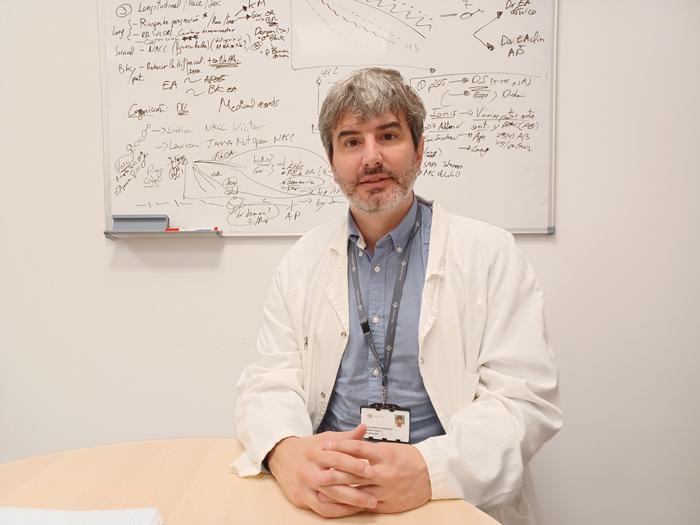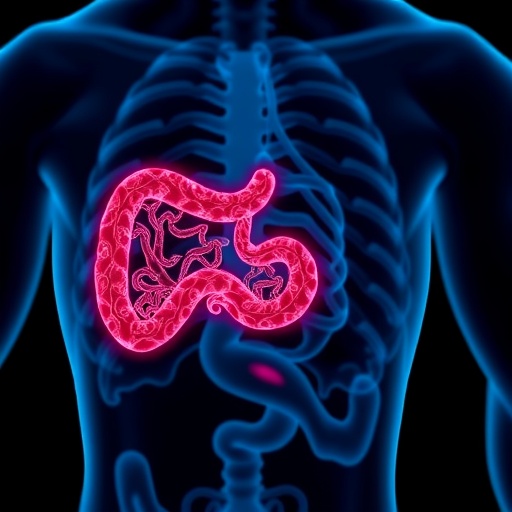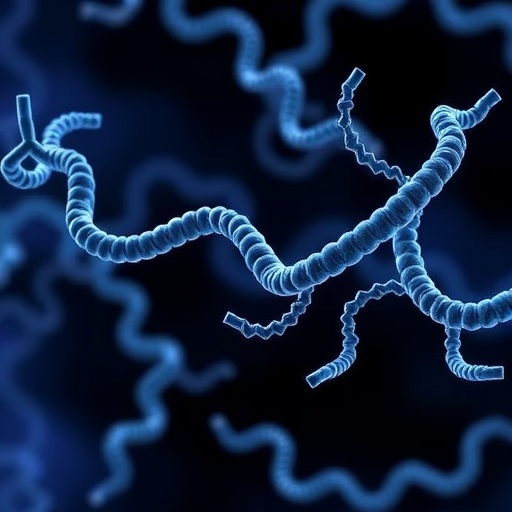Researchers from the Research Area on Neurological Diseases, Neuroscience, and Mental Health at the Sant Pau Research Institute, led by Dr. Juan Fortea, Director of the Memory Unit of the Neurology Service at the same hospital, have found that over 95% of individuals over 65 years old who have two copies of the APOE4 gene -APOE4 homozygotes- show biological characteristics of Alzheimer’s pathology in the brain or biomarkers of this disease in cerebrospinal fluid and PET scans.

Credit: Karla Islas Pieck – Institut de Recerca Sant Pau
Researchers from the Research Area on Neurological Diseases, Neuroscience, and Mental Health at the Sant Pau Research Institute, led by Dr. Juan Fortea, Director of the Memory Unit of the Neurology Service at the same hospital, have found that over 95% of individuals over 65 years old who have two copies of the APOE4 gene -APOE4 homozygotes- show biological characteristics of Alzheimer’s pathology in the brain or biomarkers of this disease in cerebrospinal fluid and PET scans.
The study, published today in Nature Medicine, also concludes that those individuals homozygous for APOE4 also develop the disease earlier than those with other variants of the APOE gene. These findings suggest that having two copies of the APOE4 gene could represent a new genetic form of Alzheimer’s disease, as explained by Dr. Fortea.
“These data represent a reconceptualization of the disease or what it means to be homozygous for the APOE4 gene. This gene has been known for over 30 years and it was known to be associated with a higher risk of developing Alzheimer’s disease. But now we know that virtually all individuals with this duplicated gene develop Alzheimer’s biology. This is important because they represent between 2 and 3% of the population,” explains this researcher.
New paradigm
It is known that mutations in three genes, APP, PSEN1, and PSEN2, are involved in the development of autosomal dominant early-onset Alzheimer’s disease -which is clearly considered genetic and can appear from the age of 40- while variants of other genes have been associated with an increased risk of developing sporadic or late-onset forms. Additionally, it was already known that APOE was one of the genes considered the strongest genetic risk factor for late-onset Alzheimer’s disease.
In this work, researchers evaluated clinical, pathological, and biomarker changes in APOE4 homozygotes to determine their risk of developing Alzheimer’s disease. They used data from 3,297 brain donors, including samples from 273 APOE4 homozygotes from the National Alzheimer’s Coordinating Center (United States) and clinical and biomarker data from over 10,000 individuals, including 519 APOE4 homozygotes from five large multicenter cohorts (from Europe and the United States) of subjects with Alzheimer’s disease biomarkers.
The results suggest that virtually all APOE4 homozygotes showed Alzheimer’s pathology and had higher levels of disease-associated biomarkers at age 55 compared to individuals with the APOE3 gene. At age 65, over 95% of APOE4 homozygotes showed abnormal levels of amyloid in cerebrospinal fluid – a key early pathological feature in Alzheimer’s disease – and 75% had positive amyloid scans.
Based on these results, the authors suggest that the genetic variant of the APOE4 gene is not only a risk factor for Alzheimer’s disease, as previously thought, but could also represent a distinct genetic form of Alzheimer’s disease.
“This reconceptualization of the disease is similar to what we proposed from Sant Pau with Down syndrome, which a few years ago was also not considered a genetically determined form of Alzheimer’s,” adds Dr. Fortea.
The authors note that these findings could be useful for the development of individualized prevention strategies, clinical trials, and targeted treatment approaches for this specific population. In this regard, Dr. Alberto Lleó, a researcher in the Dementia Neurobiology Group at the Sant Pau Research Institute and Director of the Neurology Service at the same hospital, points out that “the data clearly show that having two copies of the APOE4 gene not only increases the risk, but also anticipates the onset of Alzheimer’s, reinforcing the need for specific preventive strategies.”
On his behalf, researcher Dr. Víctor Montal, who actively participated in this study during his time at Sant Pau and now studies the molecular structure of the APOE gene at the Barcelona Supercomputing Center, adds that “the findings emphasize the importance of monitoring APOE4 homozygotes from an early age for preventive interventions.”
Journal
Nature Medicine
DOI
10.1038/s41591-024-02931-w
Method of Research
Observational study
Subject of Research
Human tissue samples
Article Title
APOE4 homozygozity represents a distinct genetic form of Alzheimer’s disease
Article Publication Date
6-May-2024
COI Statement
S.C.J. has served at scientific advisory boards for ALZPath, Enigma
and Roche Diagnostics. M.S.-C. has given lectures in symposia
sponsored by Almirall, Eli Lilly, Novo Nordisk, Roche Diagnostics
and Roche Farma, received consultancy fees (paid to the institution)
from Roche Diagnostics and served on advisory boards of Roche
Diagnostics and Grifols. He was granted a project and is a site
investigator of a clinical trial (funded to the institution) by Roche
Diagnostics. In-kind support for research (to the institution) was
received from ADx Neurosciences, Alamar Biosciences, Avid
Radiopharmaceuticals, Eli Lilly, Fujirebio, Janssen Research &
Development and Roche Diagnostics. J.D.G. has served as consultant
for Roche Diagnostics, receives research funding from Hoffmann–La
Roche, Roche Diagnostics and GE Healthcare, has given lectures
in symposia sponsored by Biogen, Philips Nederlands, Esteve
and Life Molecular Imaging and serves on an advisory board for
Prothena Biosciences. R.S. has received personal consulting fees
from Abbvie, AC Immune, Acumen, Alector, Bristol Myers Squibb,
Janssen, Genentech, Ionis and Vaxxinity outside the submitted work O.B. reported receiving personal fees from Adx NeuroSciences
outside the submitted work. D.A. reported receiving personal
fees for advisory board services and/or speaker honoraria from
Fujirebio-Europe, Roche, Nutricia, Krka Farmacéutica and Esteve,
outside the submitted work. A.L. has served as a consultant or on
advisory boards for Almirall, Fujirebio-Europe, Grifols, Eisai, Lilly,
Novartis, Roche, Biogen and Nutricia, outside the submitted work.
J.F. reported receiving personal fees for service on the advisory
boards, adjudication committees or speaker honoraria from AC
Immune, Adamed, Alzheon, Biogen, Eisai, Esteve, Fujirebio, Ionis,
Laboratorios Carnot, Life Molecular Imaging, Lilly, Lundbeck, Perha,
Roche and outside the submitted work. O.B., D.A., A.L. and J.F. report
holding a patent for markers of synaptopathy in neurodegenerative
disease (licensed to Adx, EPI8382175.0). The remaining authors
declare no competing interests.




